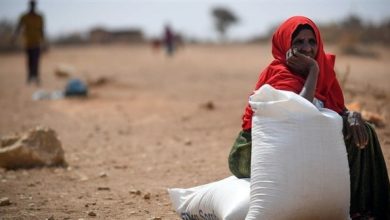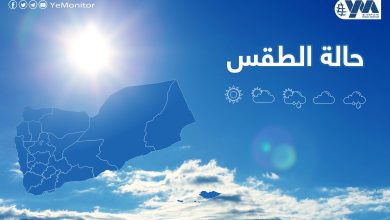Warning of Heavy rain and flash floods in Yemen

Yemeni Monitor/News Room
The National Center for Meteorology and Early Warning in Yemen and the Food and Agriculture Organization of the United Nations (FAO) have warned of heavy rains and flash floods that will sweep across the country in the coming days.
The Meteorological Department forecast in its bulletin on Friday “light to moderate rains on parts of the provinces of (Dhalea, Al Bayda, Taiz, North Lahj, Marib and Hadramaut Plateau),” as well as “active winds reaching a maximum speed of 28 knots in the south of the western coast and Bab al-Mandab Strait, and high temperatures in the deserts and western coastal plains.”
The center said that “scattered rains fell during the past 24 hours on parts of the provinces of (Saada, Amran, Sanaa, Rima, Ibb, Taiz and Al Bayda) that were outside the scope of meteorological stations, may God make them rains of good and blessing.”
The National Center for Meteorology warned “citizens in areas expected to receive rain from the flow of torrents in valleys and advised against crossing them or being in their paths, as well as taking the necessary precautions to prevent lightning strikes.”
It also warned “sea goers, fishermen and ship captains in the south of the western coast and the Bab al-Mandab Strait of sea disturbances and high waves, and citizens of the hot weather in the deserts and western coastal plains.”
The Food and Agriculture Organization of the United Nations had warned of the increasing risk of floods due to heavy rains at the end of this month, and FAO said that “the last ten days of April are expected to see a gradual increase in rainfall to between 150 and 200 mm on average, with the highest levels expected on the central highlands provinces of Dhamar, Ibb and Rima and parts of Sanaa and Dhalea.”
The UN organization added: “The estimated rainfall levels are higher than those recorded during the same period last year.”
It said: “Since the second ten days witnessed the occurrence of some floods in Hadramaut and Al Mahrah governorates, it is very likely that the heavy and concentrated rains at the end of the month will lead to widespread flash floods in many locations in the country.”
According to the FAO’s early warning and agro-meteorological bulletin, “flood forecasting models that use rainfall and topographic criteria indicate heavy and long-lasting rainfall exceeding 80 mm in some parts and more than 100 mm in other parts, even in areas that usually experience light showers at this time of year, increasing the risk of floods, which have the most impact along the main valleys such as Wadi Mawr (Hajjah and Hodeidah), Wadi Seham, Ramah and Sardod and Zabayd Hodeidah and some valleys from Ibb and Dhamar, and floods are expected on Wadi Denna which may affect some areas in Marib.”
FAO pointed out that “rain is expected on limited areas in the upper parts of the Wadi Bana and Tein basins, but with less intensity than expected along the previous valleys,” noting that “it will be accompanied by landslides, mostly in areas with steep slopes along the main roads in Manakha and Sumarah and Kuhllan.”
The organization said that “these events will negatively affect families that rely heavily on crop production. And since most farms are heading towards early farming, it is likely that heavy rains and floods will affect the farms that are already prepared, putting this season’s crop production at risk.”
The Food and Agriculture Organization concluded its bulletin by saying: “Water is likely to continue to accumulate in the cities of Seiyun and Al Mukalla, which were hit by floods last week, increasing the risk of disease spread and outbreaks.”
Yemen has recently witnessed a wave of heavy rains, floods and cyclones due to climate change, the last of which was Cyclone Tieg, which hit the provinces of Mahrah, Hadramaut and Socotra in late October last year, leaving material and human losses.




